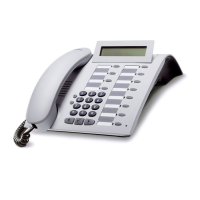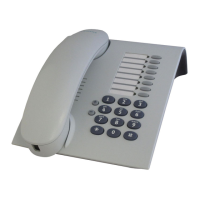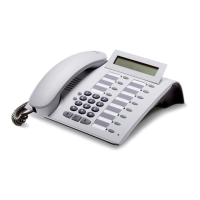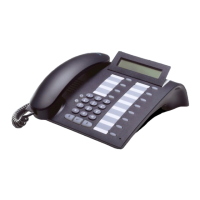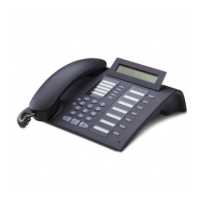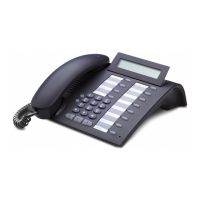Do you have a question about the Siemens optiPoint 500 Standard and is the answer not in the manual?
General warnings and precautions for safe telephone operation and handling.
Explanation of symbols and regulatory marks pertaining to the device.
Description of the telephone's physical layout, keys, and display.
Guidance on interpreting the manual's step-by-step instructions and symbols.
Methods for selecting and activating telephone features interactively or via menus.
Procedures for responding to incoming calls using handset or speakerphone.
Steps for initiating calls using off-hook and on-hook dialing methods.
How to redial previously dialed numbers using stored entries.
How to call a third party while keeping the first party on hold.
Procedures for connecting an ongoing call to another colleague.
How to redirect incoming calls to different destinations based on conditions.
Saving a request to be called back when a line is busy or unanswered.
Customizing the telephone's ring signal properties like volume and tone.
Adjusting speakerphone acoustics, receiving volume, and display angle.
Adjusting screen backlight and contrast levels for better readability.
Detailed methods for handling incoming calls, including specific calls and rejection.
Instructions for using the speakerphone for hands-free communication.
Features for entering and correcting numbers before dialing.
Managing lists of incoming calls and retrieving caller information.
Utilizing pre-programmed numbers for rapid dialing.
Activating/deactivating the ringer to avoid call interruptions.
Enabling/disabling call reception to prevent interruptions from callers.
Preventing your station number or name from appearing on external displays.
Securing the telephone with a PIN to prevent unauthorized access and use.
Programming keys to access frequently used functions, numbers, or procedures.
Scheduling timed reminders or callbacks for appointments.
Viewing call costs for the current or last conducted calls.
Guidelines for cleaning and maintaining the telephone set.
Guidance on diagnosing and resolving common telephone operational issues.
Explanations of common error messages and their possible causes and resolutions.
Details on FCC certification, rules, and requirements for telephone equipment.
Explanations of Ringer Equivalence Number, network interfaces, and hearing-aid compatibility.
Notices regarding connection of equipment to telecommunications networks and safety precautions.
| Type | Digital phone |
|---|---|
| Headset port | Yes |
| Wall mountable | Yes |
| Weight | 0.8 kg |
| Compatibility | Siemens HiPath systems |
| Audio features | Hands-free talking (full-duplex) |
